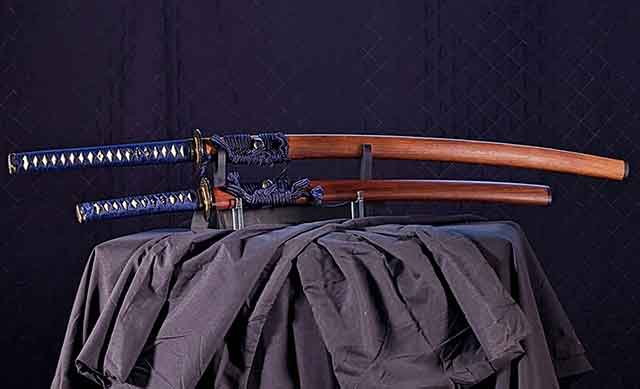
The term "daisho" finds its roots in the combination of two Japanese words: "daito," denoting a long sword, and "shoto," signifying a short sword. The combination of the words daito and shoto made the word. Daisho referred to the practice of wearing both a long and short katana together, regardless of their matching characteristics. While the classic depiction of daisho involves a katana and wakizashi (or tanto) in matching koshirae, any pairing of a longer sword with a tanto can also be considered a daisho. It later came to mean two swords with coordinated fittings. While having blades from the same swordsmith was an option, it was not a requirement for a pair to be classified as a daisho, as this would have been a more costly choice for a samurai.
The concept of daisho originated from the custom of matching a short sword with whatever long sword was in vogue during a specific era. Initially, the tachi was paired with a tanto, and later, the katana found its partner in a shorter katana known as a chiisagatana. With the rise of the katana, the wakizashi gradually took precedence over the tanto as the preferred short sword among samurai. Kanzan Sato, in his book "The Japanese Sword," suggests that the wakizashi gained popularity due to its suitability for indoor combat. He notes the practice of leaving the katana at the entrance of a castle or palace while continuing to carry the wakizashi indoors.
Daisho likely gained popularity towards the end of the Muromachi period (1336 to 1573), with early examples dating back to the late 16th century. In 1629, an edict was issued outlining the duties of a samurai, mandating the wearing of daisho while on official duty. The privilege of wearing daisho was restricted to the samurai class in 1683, becoming a symbol of their status. While samurai could don decorative swords in everyday life, the Tokugawa shogunate regulated the appearance of swords for formal occasions, such as visits to a castle. For formal attire, the daisho was characterized by a scabbard in solid black, with the hilt's winding thread and wrapping made of white ray skin.
According to most traditional kenjutsu schools, only one sword from the daisho would have been wielded in combat. However, in the first half of the 17th century, the renowned swordsman Miyamoto Musashi advocated for a one-handed grip, enabling the simultaneous use of both swords. This technique, known as "nitoken," forms a cornerstone of the Niten Ichi-ryū style of swordsmanship founded by Musashi.
During the Meiji period, an edict in 1871 abolished the requirement for samurai to wear daisho, and in 1876, the public carrying of swords was banned for most of Japan's population. This marked the end of the daisho's role as a symbol of the samurai, coinciding with the abolition of the samurai class shortly thereafter.
See also
-
Sojutsu - The Art of the Spear
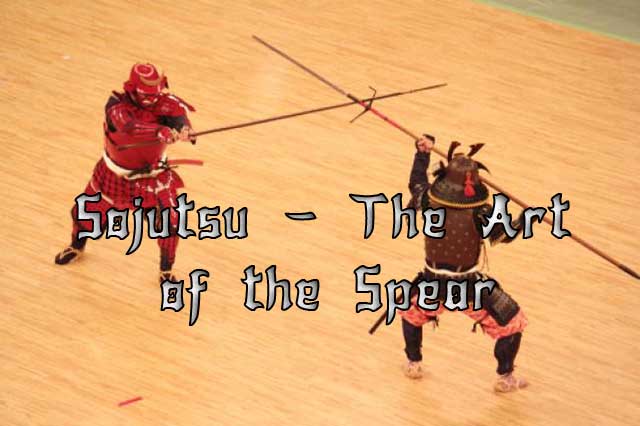
Sojutsu is a traditional Japanese martial art dedicated to the mastery of the yari spear. It is considered the second most important martial art of medieval Japan after swordsmanship.
-
Yari
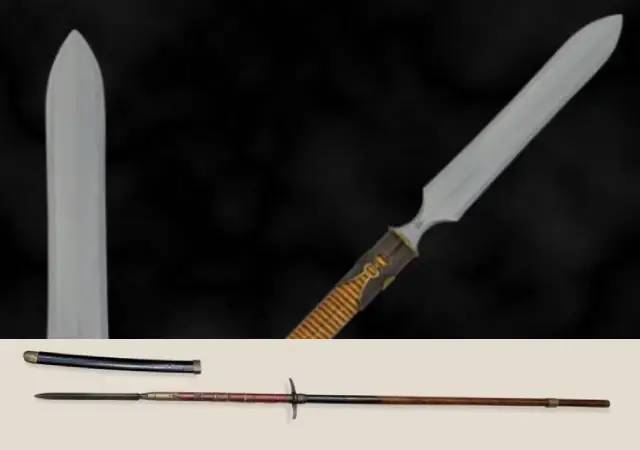
Yari is one of the traditional Japanese cold weapons (nihonto), which is a spear with a straight tip. The art of wielding a yari is known as sojutsu, a spear fighting technique.
-
Wakizashi and tanto

In the history of Japanese edged weapons there are objects that border between the concepts of “sword” and “knife”. This is especially true of the wakizashi, a short sword traditionally carried by samurai along with the katana, and the tanto, a combat knife popular among a wide range of social classes. Both items were worn behind the belt, had a short blade, and were used in close combat. However, there is a fundamental difference between the two, and it goes far beyond simple blade length.
-
Katana and Tachi
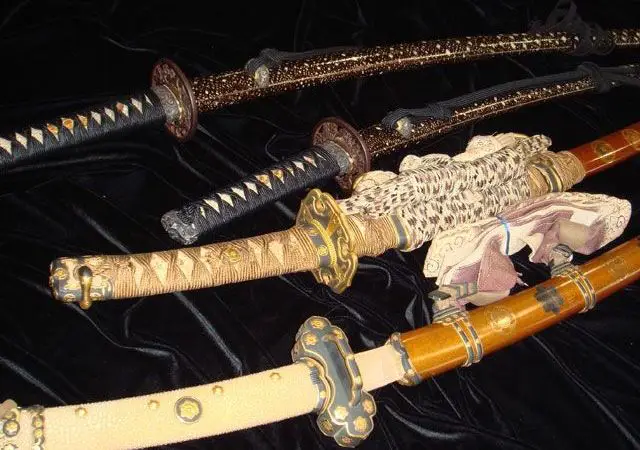
When Westerners think of Japanese swords, they often picture the iconic curved blades like the katana. However, in terms of historical precedence and prestige, it would be more accurate to reverse this image—the tachi predates the katana and traditionally held a higher status.
-
Tanto
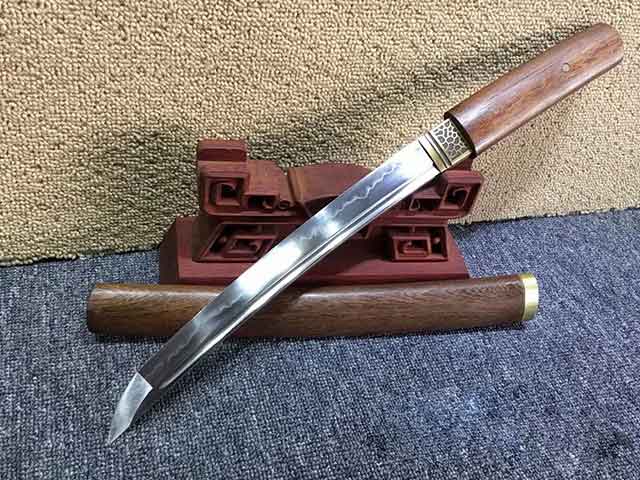
The Tanto knife is a traditional Japanese dagger that was once an integral part of the samurai warrior’s arsenal. It is known for its unique shape and cutting ability, and it is still revered by many martial artists and knife enthusiasts today.
-
Tachi
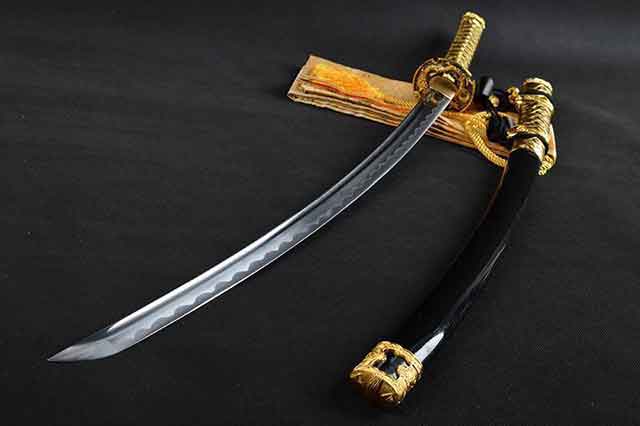
The samurai sword known as Tachi is one of the most iconic weapons in Japanese history. Its unique design and construction made it a popular choice among samurai warriors, and it played a significant role in many battles throughout Japan's history.
-
Nagitana
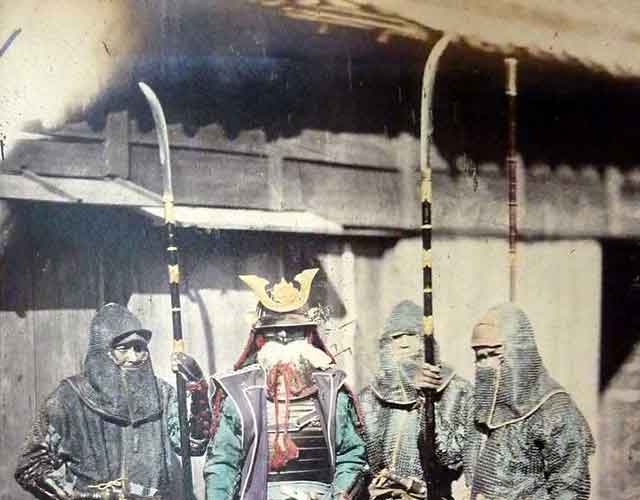
The Nagitana is a formidable weapon that was used by the samurai during feudal Japan. It was a polearm that combined the elements of a spear and a sword, making it a versatile weapon that was effective both at long range and in close combat. In this article, we will explore the history, construction, characteristics, and usage of the Nagitana.
-
Wakizashi
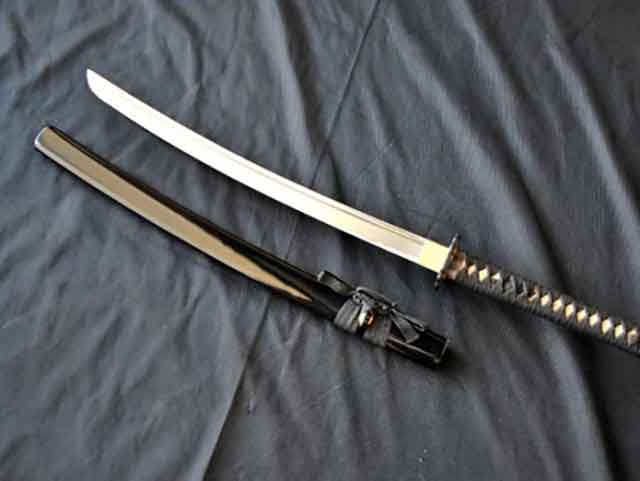
How did Wakizashi come about
The wakizashi, also known as the companion sword, is a traditional Japanese short sword that was widely used by the samurai warriors during the feudal era in Japan. This versatile sword has a long and rich history, and has played an important role in Japanese culture and warfare for centuries.

